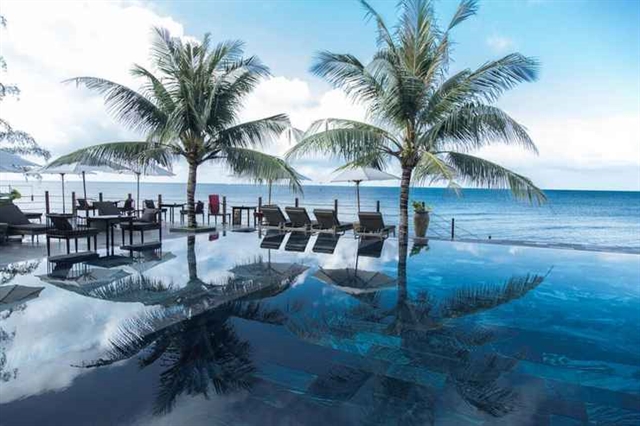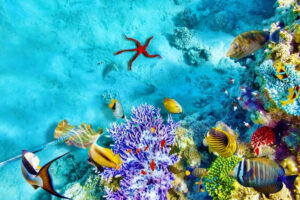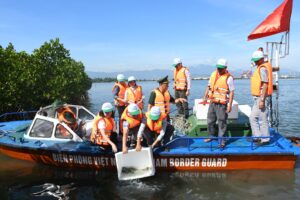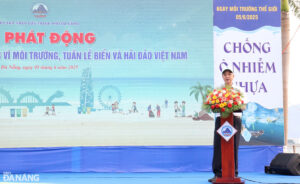“Safe haven tourism” is one way for Viet Nam to maximise tourism revenues while minimising risks posed by COVID-19 pandemic, according to investment fund VinaCapital.

A resort in Phu Quoc Island. “Safe haven tourism” is one way for Viet Nam to reboot the tourism industry. — Photo courtesy of Traveloka
Don Lam, its co-founder and CEO, said the tourism industry contributed 10-15 per cent to the country’s economy and employed 1.3 million people, but had come to a standstill like elsewhere in the globe due to COVID-19.
“We estimate that tourist arrivals to Viet Nam could fall by at least 60 per cent in 2020 after falling nearly 40 per cent in the first four months of this year.”
It would probably take two years for the global tourism industry to recover.
One idea to reboot the industry was “safe haven tourism” by creating confidence in both visitors and destinations that health and safety issues were fully addressed.
“We encourage a low-risk/high-return strategy be applied where Viet Nam specifically targets higher spending tourists from countries with low risk of COVID-19 complemented by controls that lower the risk of new cases occurring in Viet Nam.”
The Government could partner with resorts and airlines to enable visitors to once again enjoy travel while minimising the risks associated with the virus.
They could avoid having to be quarantined and instead stay at designated resorts confident the property had been sealed from the virus.
Resorts participating in this programme would need to be large, integrated properties with compelling attractions such as nice beaches and/or gaming facilities. This could even lead to the Government declaring entire islands (such as Phu Quoc or Con Dao) “safe haven tourism zones”.
Critically, steps would need to be taken to ensure that visitors were not exposed to COVID-19 while traveling from their home country to the resort and at the resort.
Visitors would need to be tested for the virus before boarding a flight to Viet Nam. Daily temperature checks of all guests and employees would need to be done at the resort and all employees would need to live within a designated quarantine area.
Contact tracing procedures would also need to be established, all guests and employees might be required to download a geo-tracking app on their mobile phones and carry it at all times and the standard social distancing measures would also have to be maintained.
“Even during the last economic recession, some consumers had the financial ability to take holidays.”
Recent surveys found that people were keen to travel once again when it was safe to do so.
“The key to encouraging people to travel again is to minimise the risk as best as possible. People will not travel if they fear they could become ill. This is one reason we believe Viet Nam will benefit.”
Viet Nam’s outstanding record in containing the COVID-19 pandemic could appeal to visitors.
Potential tourists
The obvious countries to target for a programme like this would be China and South Korea because of their geographic proximity and because they had already “flattened the curve” and had COVID-19 under control.
Prior to the outbreak, tourists from these two countries made up almost half of all foreign tourist arrivals in Việt Nam.
Viet Nam would need to enter into agreements with these countries to enable their citizens to travel to Viet Nam as “safe haven tourists” and avoid quarantine when returning home.
Tourists from those countries could be attracted to Viet Nam because it was the only country in the region with large areas filled with resorts that had little COVID-19 risk.
There is probably pent-up demand from honeymooners in these countries who have not been able to travel and Viet Nam could even offer visitors the ability to hold destination weddings – given that group gatherings of over 30 people are generally prohibited in most geographies in the world now.
“Viet Nam’s beautiful destination will enable these couples and their families and friends to celebrate their wedding properly and safely.”
The country could attract new visitors who had not been interested in visiting the country before.
Supporting domestic tourism
Domestic tourism spending was growing by nearly 7 per cent annually, and contributed 40 per cent of the country’s tourism revenues.
Since it might be difficult for Vietnamese to travel abroad, persuading them to travel here would obviously be easy.
But Vietnamese tourists tended to visit the same places such as Da Lat, Vung Tau and Da Nang year after year. Viet Nam had so much to offer and the private sector and the Government needed to consider how they could do more to promote other destinations and locations.
“Vietnamese tourists want the same thing as international ones: confident the place they visit [guarantees] safety.”
















